Abstract
Since health-risk behaviors are often encountered in clusters among adolescents, it was hypothesized that adolescents with poor school attendance would be associated with more health-risk behaviors (e.g., substance use, violence) than those who attend school regularly. This study assessed the relationship between poor school attendance and health-risk behaviors, and described health-risk behaviors and self-esteem among adolescents seeking employment. In this cross-sectional study, school attendance (poor vs. regular attendance) was related to health-risk behaviors by asking 122 subjects seen at a New York City Working Papers Clinic to complete both a 72-item questionnaire about their health-risk behaviors and the 58-item Coopersmith Self-Esteem School Form Inventory. Chi-square and Fisher's Exact Tests were performed. The poor and regular attenders of school differed significantly in only 5 out of 44 items pertaining to health-risk behaviors. Self-esteem measures for the two groups did not differ from one another or from national norms. In this sample, depression "in general" (global) and "at home," but not "at school," were associated significantly with suicidal thoughts/attempts and serious past life events (e.g. family conflict, sexual abuse). There were no significant associations between depression or self-esteem and illicit substance or alcohol use. We found few associations between poor school attendance and health-risk behaviors in this sample of employment-seeking adolescents. The poor and regular attenders of school were similar in most aspects of their health-risk behaviors and self-esteem.
Full text
PDF
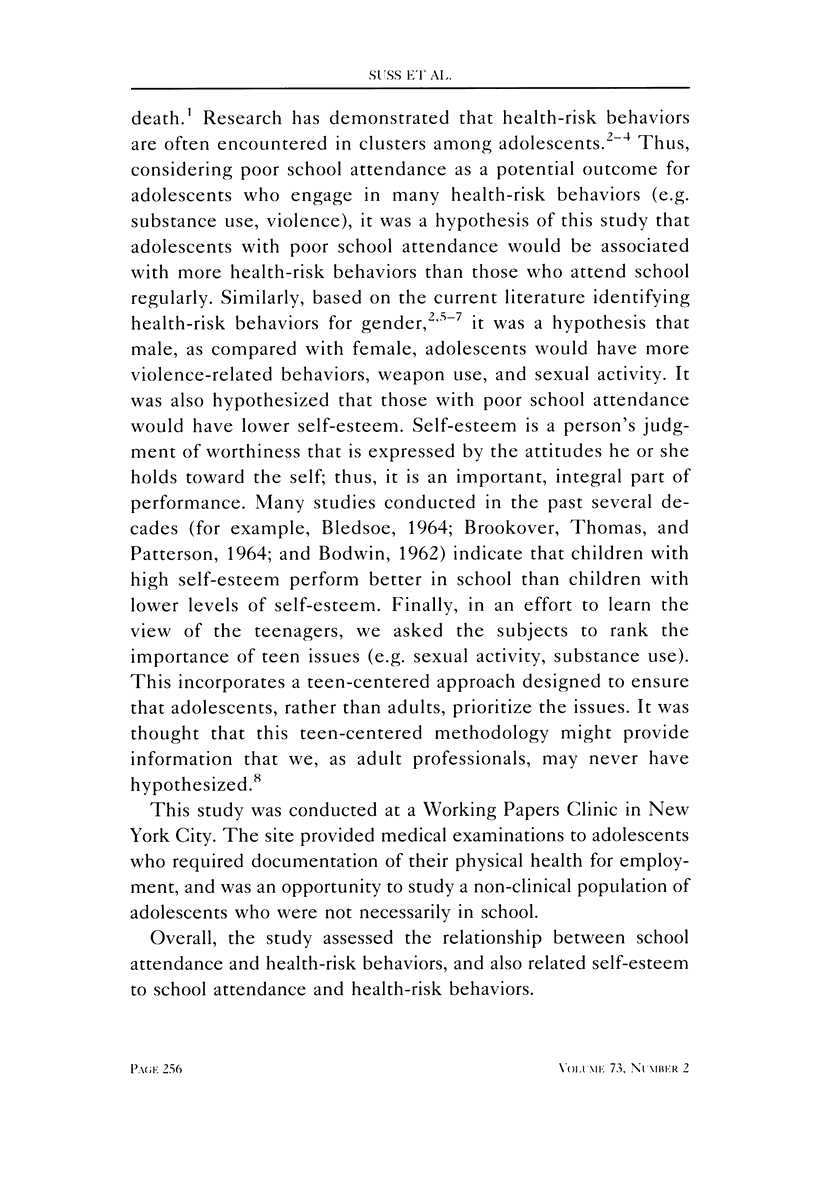
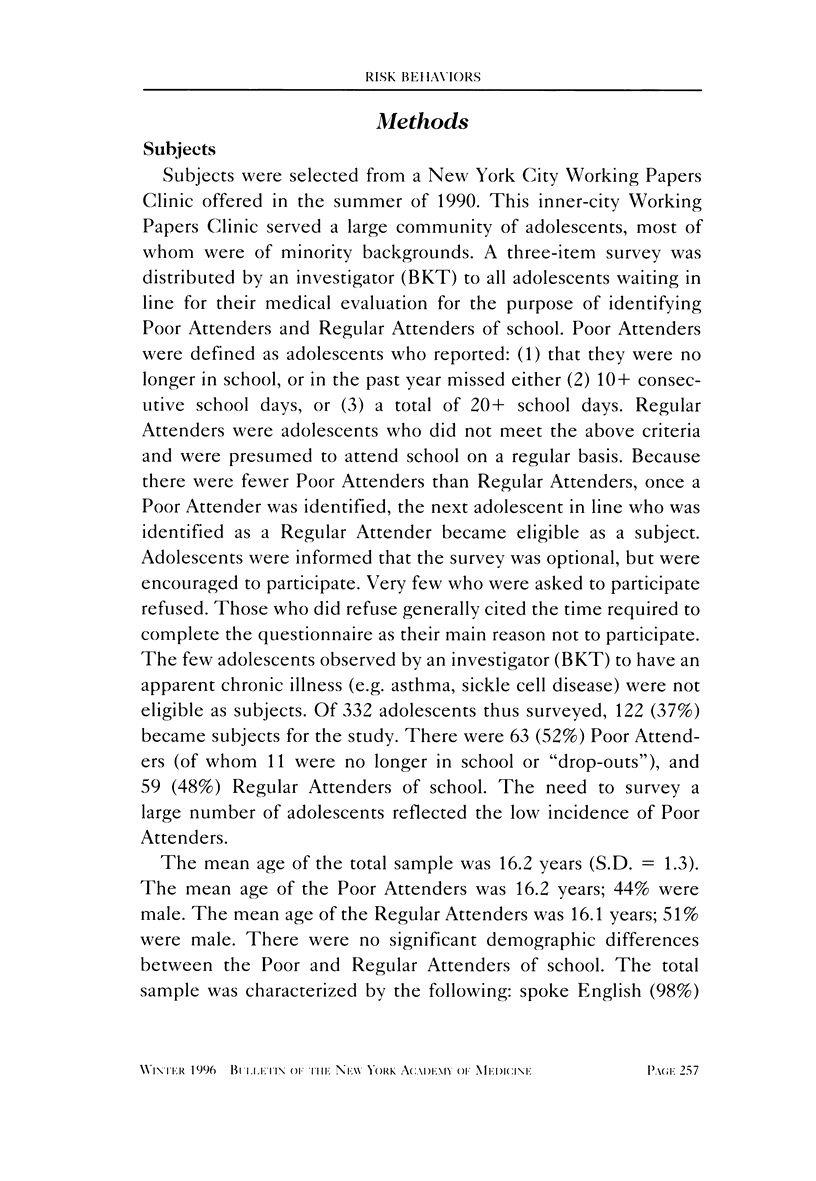

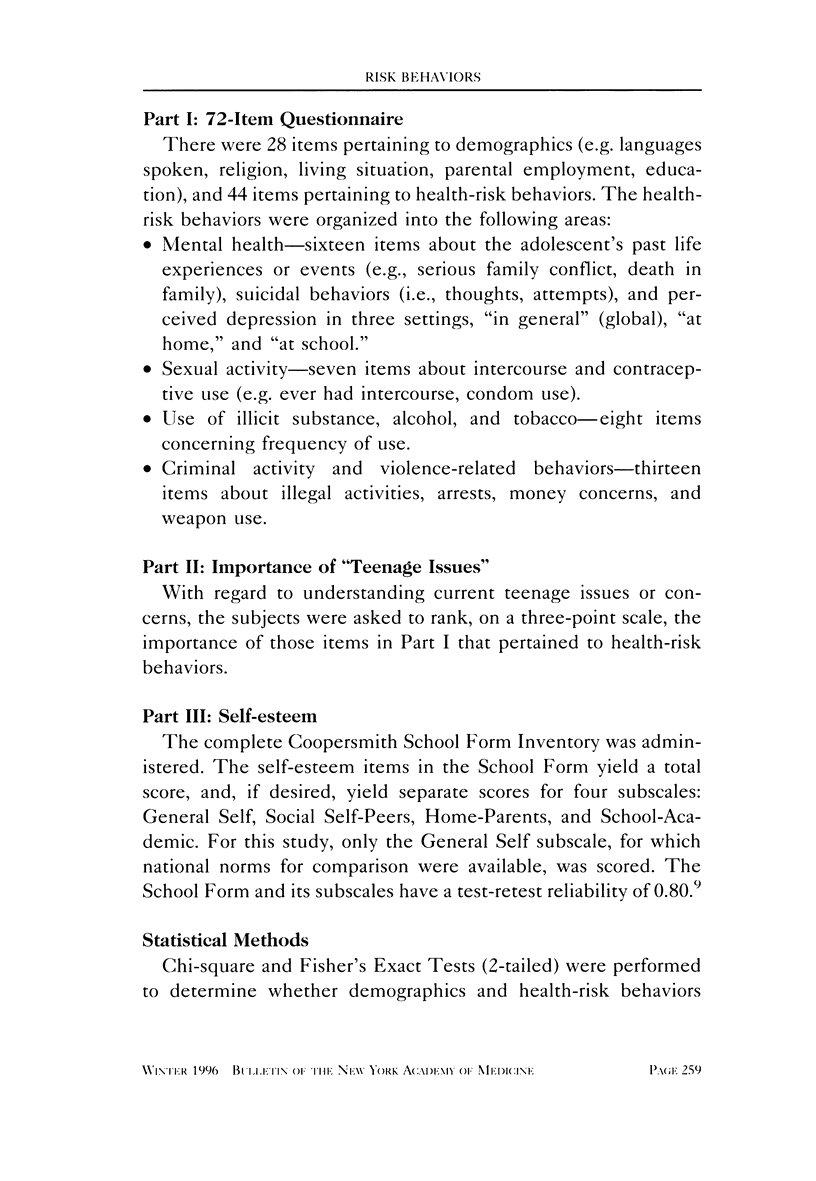
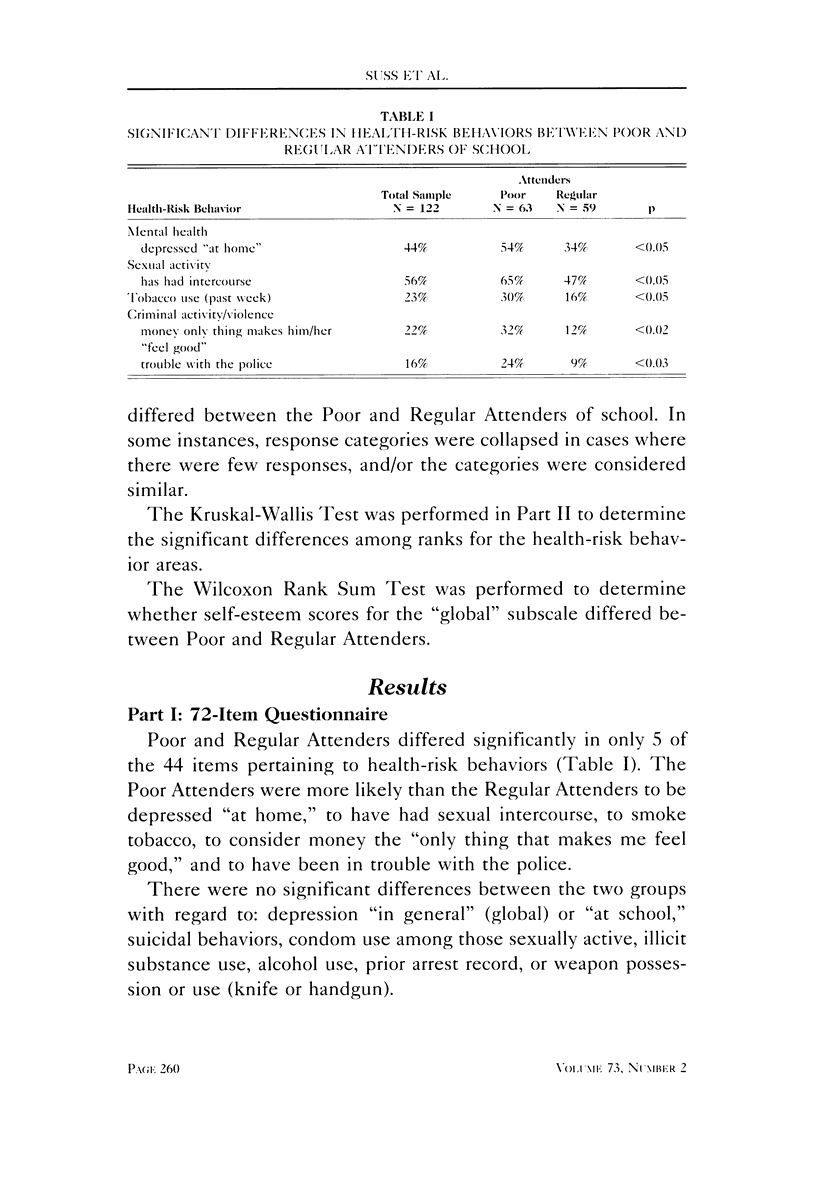


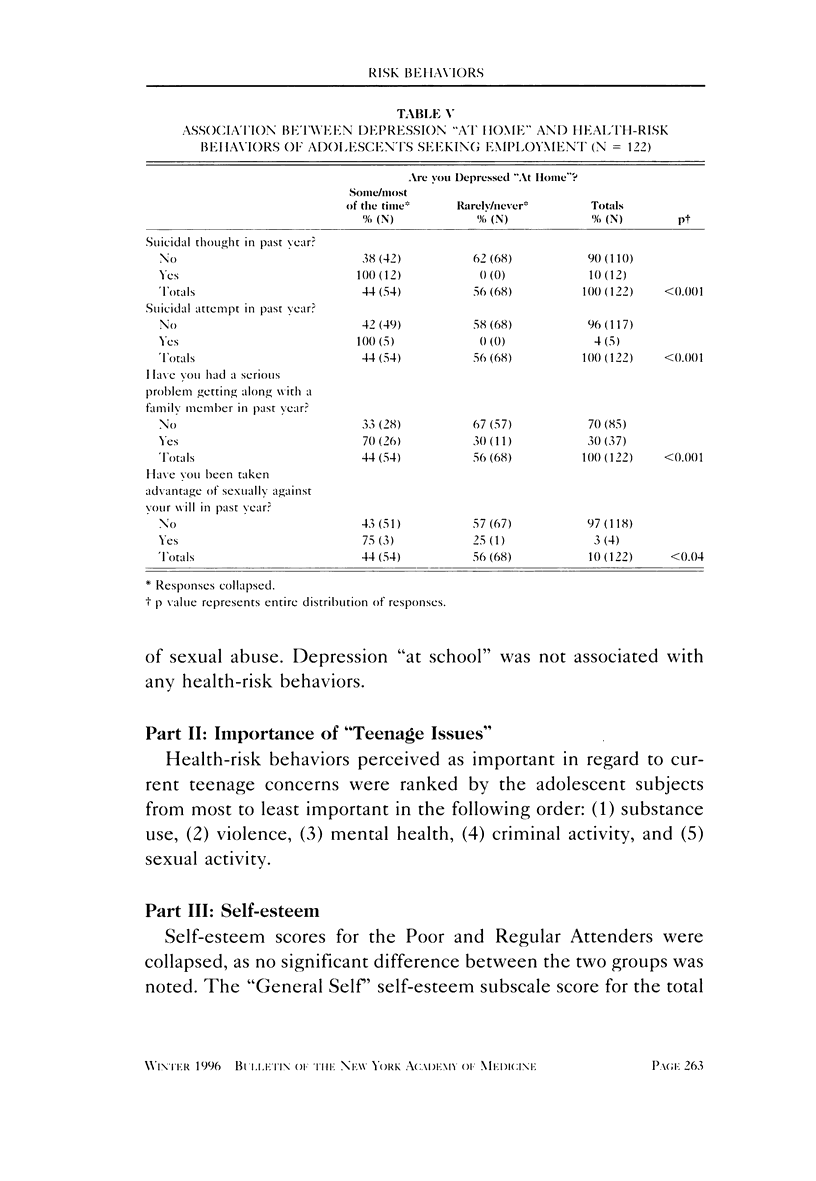

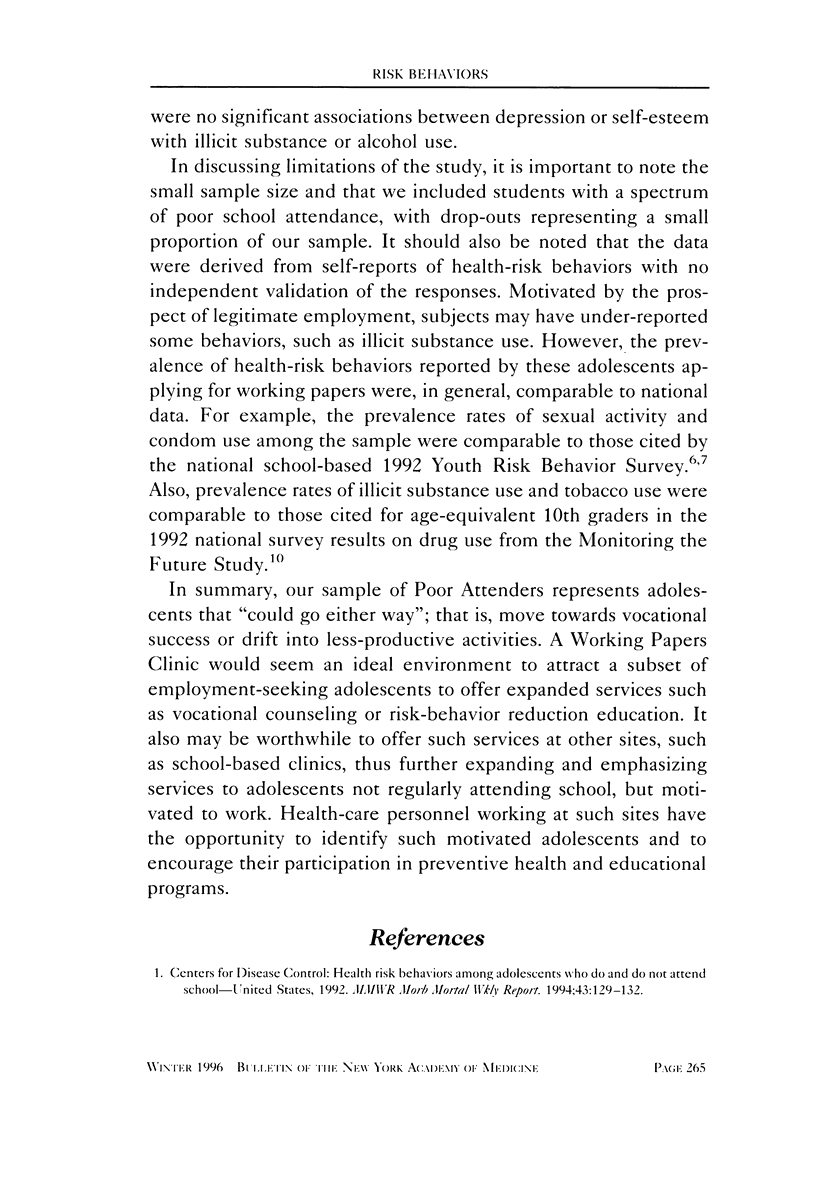
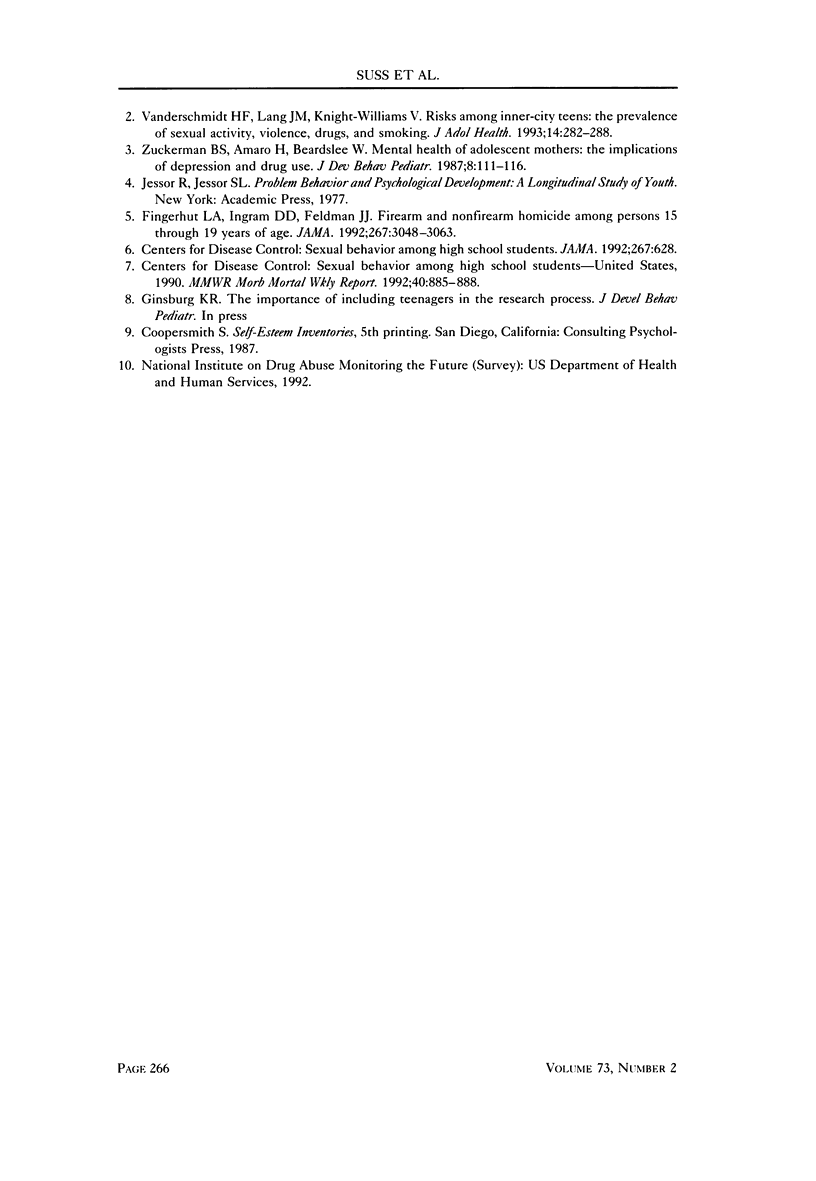
Selected References
These references are in PubMed. This may not be the complete list of references from this article.
- Centers for Disease Control (CDC) Sexual behavior among high school students--United States, 1990. MMWR Morb Mortal Wkly Rep. 1992 Jan 3;40(51-52):885–888. [PubMed] [Google Scholar]
- Centers for Disease Control and Prevention (CDC) Health risk behaviors among adolescents who do and do not attend school--United States, 1992. MMWR Morb Mortal Wkly Rep. 1994 Mar 4;43(8):129–132. [PubMed] [Google Scholar]
- Fingerhut L. A., Ingram D. D., Feldman J. J. Firearm and nonfirearm homicide among persons 15 through 19 years of age. Differences by level of urbanization, United States, 1979 through 1989. JAMA. 1992 Jun 10;267(22):3048–3053. [PubMed] [Google Scholar]
- Vanderschmidt H. F., Lang J. M., Knight-Williams V., Vanderschmidt G. F. Risks among inner-city young teens: the prevalence of sexual activity, violence, drugs, and smoking. J Adolesc Health. 1993 Jun;14(4):282–288. doi: 10.1016/1054-139x(93)90175-o. [DOI] [PubMed] [Google Scholar]
- Zuckerman B. S., Amaro H., Beardslee W. Mental health of adolescent mothers: the implications of depression and drug use. J Dev Behav Pediatr. 1987 Apr;8(2):111–116. [PubMed] [Google Scholar]


